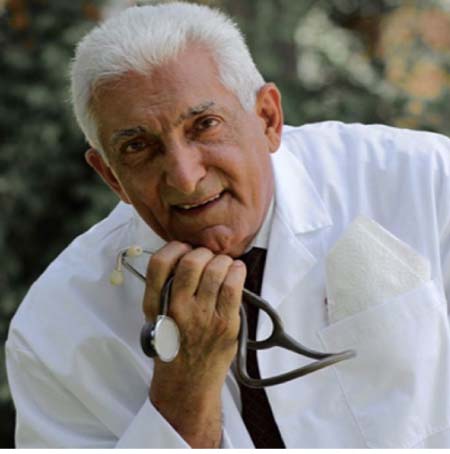
Signs and Symptoms of Ten Common Liver Diseases
Your liver is the largest organ in your body. It is also one of the most important because of it plays an essential role in turning food into energy, and removing poisons from the blood. But did you know that instances of some liver diseases are on the rise?
A liver disease is a collection of conditions, disorders, and infections that affect the cells, structures, and tissues of the liver, causing liver damage or stops liver functioning altogether.
A list of conditions causing liver problems includes the following:
Acetaminophen toxicity
Alcoholic liver disease
Cancer
Cirrhosis
Cysts
Fatty liver disease (NAFLD)
Fibrosis
Hepatitis
Jaundice
Alcoholic LiverDisease
The longer the period during which alcohol is excessively consumed and the greater the amount ingested, the higher the likelihood of developing alcoholic liver disease and other liver problems.
Signs and Symptoms of Alcoholic LiverDisease
Symptoms are usually worse after an episode of heavy drinking, and tend to vary with the severity and progression of the disease. Sometimes symptoms do not present themselves until the disease is relatively advanced.
Abdominal pain and tenderness
Ascites (excess fluid between the membranes lining the abdomen and abdominal organs)
Confusion
Dry mouth / excessive thirst
Fatigue
Fever
Jaundice
Loss of appetite
Nausea
Weight gain due to asides
Additi Abnormally dark or light skin
Agitation
Altered level of consciousness
Bloody or dark, black, or tar-like bowel movements
Breast development in males
Difficulty concentrating
Fluctuating moods
Hallucinations
Impaired judgment
Impaired short- or long-term memory
Light-headedness or fainting
Paleness
Rapid heart rate when rising to a standing position
Redness on feet or hands
Slow, sluggish, lethargic movement
Vomiting blood or a sludge-like material
anal symptoms associated with the disease:
Primary LiverCancer
Primary liver cancer is a growing liver problem, and generally remains undetected until it has reached the advanced stages because most people do not exhibit symptoms early on. By protecting yourself from cirrhosis and hepatitis – the two leading causes of the disease – you can greatly reduce your risk of developing liver cancer.
Signs and Symptoms of Primary LiverCancer
A yellow discoloration of the skin and whites of the eyes (jaundice)
Abdominal pain, especially in the upper right part of the abdomen
Abdominal swelling
An enlarged liver
General weakness and fatigue
Loss of appetite
Nausea and vomiting
Weight loss
Liver Cirrhosis
Liver Cirrhosis is generally considered to be the 4th stage of Alcoholic Liver Disease, a progressive condition causing liver damage.
Signs and Symptoms (and Complications) of Liver Cirrhosis
During the early stages, many people with cirrhosis experience no liver damage symptoms. However, as scar tissue replaces healthy cells, and liver function begins to fail, a person may experience a variety of symptoms and complications
Abdominal pain
Abnormal accumulation of fluid in the abdominal cavity (ascites)
Bleeding from engorged veins in your esophagus or intestines
Dark, cola-colored urine
Easy bruising
Exhaustion
Fatigue
Gallstones
Insulin resistance and type 2 diabetes
Itchy hands and feet
Lack of appetite
Liver cancer
Liver failure
Loss of interest in sex
Nausea
Other system malfunctioning such as impotence, kidney dysfunction and failure, and osteoporosis
Portal hypertension (an increase in blood pressure in veins that carry blood from the abdominal organs to the liver)
Sensitivity to medications
Small, spider-like blood vessels under the skin
Swelling of legs and feet from retained fluid (edema)
Hepatic encephalopathy (toxins in the blood or brain – signs include forgetfulness, confusion, trouble concentrating; change in sleeping habits; behavioral, personality, and mood changes; and in advanced cases, delirium and coma)
Varix (an abnormally dilated or swollen vein, artery, or lymph vessel)
Weakness
Weight loss
Yellowing of skin and eyes (jaundice)
Hepatitis
A gastroenterological disease, hepatitis means inflammation of the liver. Hepatitis is not one, but many diseases – Hepatitis A through E – in which the liver becomes inflamed, and its cells are damaged as a result of inflammatory chemicals being produced and released in the liver. Chronic hepatitis B infection increases a person’s chance of developing liver cancer by one hundred times.
Signs and Symptoms of Hepatitis
The symptoms of various hepatitis forms are similar, the most noticeable being jaundice. As the viral infection spreads throughout the liver, the organ becomes enlarged, often causing abdominal pain.
Abdominal pain
Dark urine
Diarrhoea
Enlarged liver
Fatigue
Fever
General achiness
Headache
Jaundice
Joint aches
Loss of appetite
Malaise
Mild fever
Vomiting two to three times per day, during the first five days
Some forms of hepatitis show very few symptoms, presenting only when longstanding inflammation has already led cirrhosis.
Note that Alcoholic Hepatitis is generally considered to be the 2nd stage of Alcoholic Liver Disease, a progressive liver damaging condition.
Jaundice
Jaundice is not a liver disease, but rather a symptom that can occur as a result of a variety of diseases. It appears as a yellowish discoloration of the skin and whites of the eyes caused by the abnormal build-up of bilirubin in the blood.
An orange-yellow pigment, bilirubin is part of bile; it forms in the liver as a by-product of old blood cells. When there are too many red blood cells dying for the liver to cope with, yellow pigment builds up in the body resulting in jaundice, a visible sign of liver problems.
The presence of jaundice is an indicator that a person is suffering from one of a variety of diseases including,
Acetaminophen toxicity
Alcoholic liver disease (alcoholic cirrhosis)
Autoimmune hepatitis
Biliary stricture (an abnormal narrowing of the biliary duct)
Bilirubin processing disorders present at birth (Crigler-Najjar, Dubin-Johnson, Gilbert’s, or Rotor’s syndromes)
Blocked bile ducts (caused by gallstones, infection, or tumors)
Chronic active hepatitis
Drug-induced cholestasis (bile pools in the gallbladder as a result of certain drugs)
Drug-induced hepatitis
Fatty liver disease (NAFLD)
Hemolytic anemia
Intrahepatic cholestasis of pregnancy (bile pools in the gallbladder because of the pressure in the abdomen during pregnancy)
Ischemic hepatocellular jaundice (jaundice caused by inadequate oxygen or blood flow to the liver)
Pancreatic cancer
Primary biliary cirrhosis or sclerosing cholangitis
Primary liver cancer
Malaria
Viral hepatitis (A, B, C, D, and E)
What to do when you have liver disease symptoms
Once you’ve had an opportunity to consider the symptoms you’ve been experiencing, the next step is to educate yourself about the possibilities in terms of determining potential diseases. Remember, nobody knows your body better than you do.
An exploration of the various liver diseases will help you to decide whether or not you wish to pursue further testing. And education is doubly crucial because the more you know, the more face time your health care provider will be able to extend to you.
Testing will help to determine what the underlying issue is.
Liver disease screening and diagnosis
Blood tests to measure bilirubin and electrolyte levels
Computerized tomography (CT or CAT) scans take cross-sectional X-ray images of your internal organs
Endoscopic retrograde cholangiopancreatography (ERCP) combines the use of X-rays and an endoscope (a long, flexible, lighted tube) to diagnose and treat problems in the liver, gallbladder, bile ducts, and pancreas
Magnetic resonance imaging (MRI) scans use magnetization and radio waves to produce images of the internal organs
Stool tests to measure the amount of fat in faces
Ultrasound (ultrasonography) is a non-invasive test using high-frequency sound wave technology to create an image of your liver
Liver diseaseprevention
Preventing liver disease and liver problems should be something we all focus on before we have issues, but that’s just not the way we work! Some of the many choices we have to improve our liver health, before and after we have liver damage, include liver cleanse supplements and liver cleanse diets. As part of the Puristat Wellness Centre we offer information on liver cleanse diets and multiple liver cleanse programs. Please be sure to visit our products page to review the best choice for you.
For further information visit MRC, EFSTH, number of NGO and private clinics, Email to azadehhassan@yahoo.co.uk, Text to 002207774469/3774469.
Author DR AZADEH Senior Lecturer at the university of the Gambia, Senior Physician and seniorConsultant in Obstetrics and gynaecology


